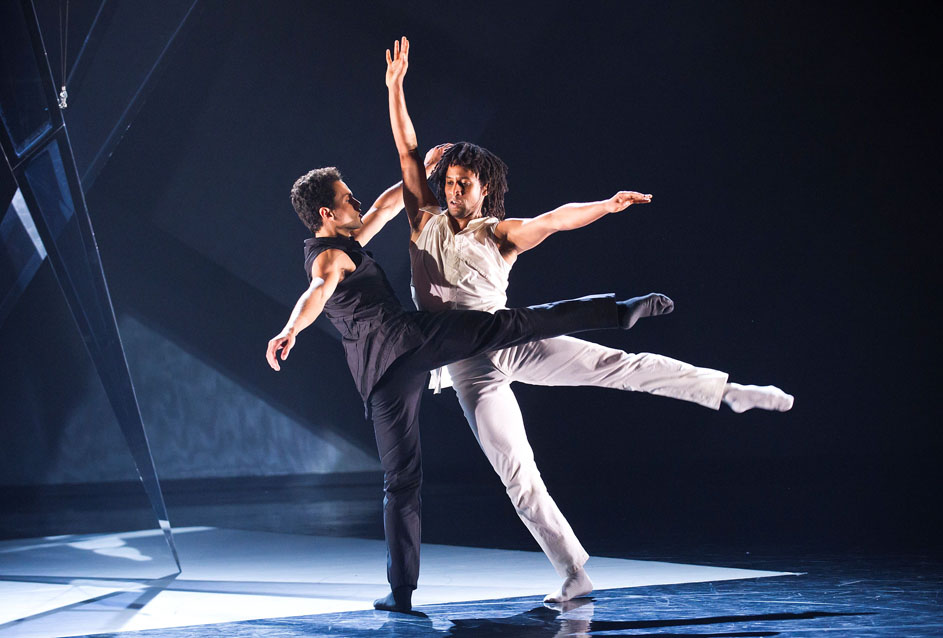Artistic Director Mark Baldwin’s latest repertoire is a triumph. The three dances performed at the Theatre Royal last night underlined Rambert’s reputation as a must-see theatrical and musical event. The performances combined controlled aesthetic athleticism with emotional intensity, while the Rambert Orchestra under the baton of Paul Hoskins provided the pulse, completely at home with the intricacies of Schoenberg, freeform percussive treatments and with tango driven cabaret.
The evening began with The 3 Dancers, a piece inspired by the 1925 painting by Picasso. Dutch choreographer Didy Veldman had been curious to see if she could apply Cubism to dance using light and layers of movement. Two groups of three dancers, one dressed in black, the other white, each began by striking mixed poses, spotlit in turn, giving a feel of kinetic animation, negative/positive visuals that mirrored Picasso’s original design. Then, never letting go of their hands, each group of three became as an interconnected amoeba, always in flux, searching out the tensions between themselves. Veldman: “There is so much emotion in the picture, and I was drawn to the way Picasso generated that energy… the way the perspective moves around.” Composer Elena Kats-Chernin provides the dancers with a driving tango-charged musical tapestry on which to weave their explorations. Immediately the audience was engaged. As the dance ‘trios’ eventually divided and mixed white into black, black into white, three long shards of mirror were lowered to the stage. As the movement splintered behind and in front of these shapes, we had a real sense of deconstruct, of 3-D cubist movement.
Transfigured Night followed. Kim Brandstrup has choreographed a memorable narrative translation of Richard Dehmel’s original poem and Schoenberg’s exquisite Verlärte Nacht. I think this was one of the most original uses of ensemble dancing I have witnessed. While Simone Damberg, appearing in a bright ginger dress and Miguel Altunaga played out the edgy politics of a precarious love affair, the rest of the company attired in neutral black acted like some sort of collective brain chemistry, giving us all we needed to know about the state of emotion either protagonist was in, and serving brilliantly to accentuate whether the relationship would thrive or die – a beautiful and powerful piece.
Frames was the final performance of the night. Alex Whitley has produced an extraordinary piece that imagines dancers as factory assembly line operators. In it he questions what dance itself produces if no tangible physical evidence remains after a performance. For this the Rambert Orchestra excelled themselves by producing a stunning percussive backdrop that the likes of Massive Attack would surely die for. All instruments were plumbed for extremes and none disappointed.
The dancers dressed in simple “work’ gear, white shirts and matching beige trousers, gradually manipulated straight metal strips into long snakes, then triangles and finally frames through which they found multiple ways of interacting with. In a final sequence, small spotlights were attached to the frames which were hoisted aloft making the spotlit dancers below look not unlike a well-tuned conforming army of workers – art and industry inexorably linked.
An uplifting and inspiring night, Rambert are alive with talent. ★★★★★ Simon Bishop 13th November2015
Photo by Tristram Kenton


